Architecture Action Lab builds outdoor gym and play space for kids in Russell Heights
October 14, 2024
There were games, candy floss, hot dogs, and a DJ as members of the Russell Heights community marked the opening of a new recreational space, built by Carleton University architecture students with help from users.
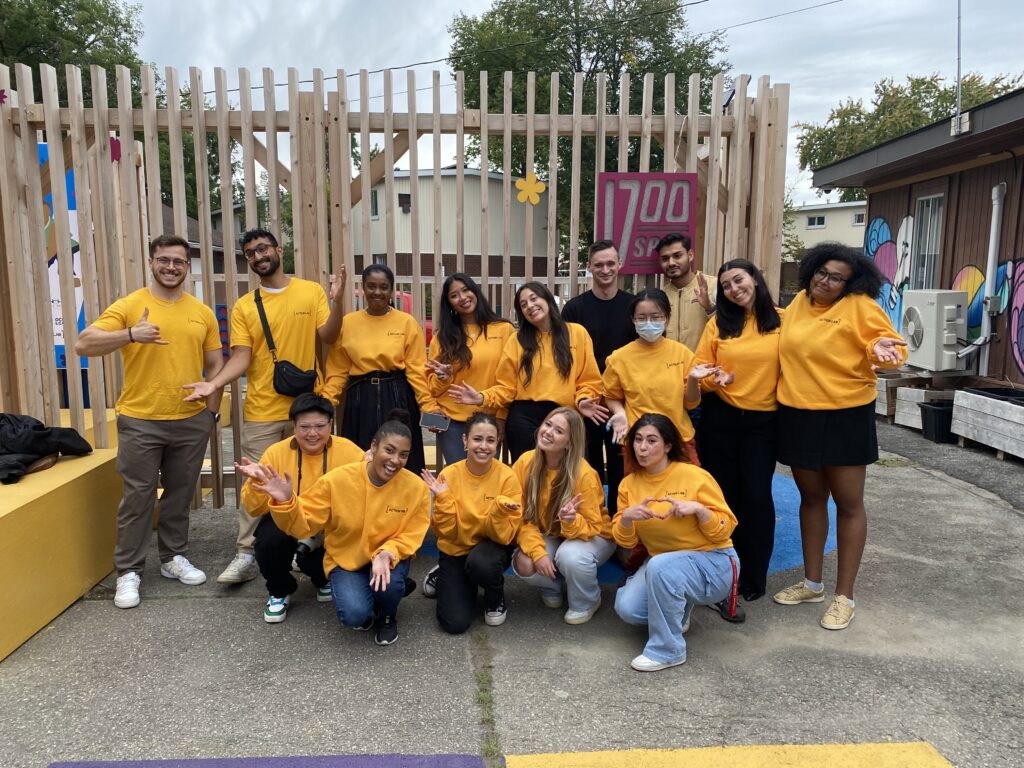
1700 Spot is the name for a group of outdoor activity areas clustered around a community kitchen. What was bare asphalt has become an outdoor gym with chin-up bars and punching bags, walls to play games, and courts for volleyball and basketball. Designed for children and youth, it includes a stage for events, an outdoor screen for movies, plus places to hang out and talk.
“I can wish and hope that this project makes these kids feel like they are worth a good piece of architecture, and they deserve joy, and they deserve a public space that is for them,” says Assistant Professor Menna Agha, who orchestrated the project.
“I can only hope that they have a better sense of belonging to the city and a sense of agency and authorship over the city.”
Built over two summers, the $100,000 design-build project represents the collaborative efforts of the Azrieli School of Architecture & Urbanism’s Architecture Action Lab, directed by Dr. Agha, Russell Heights Community House, and Ottawa Community Housing.
It was made possible with generous gifts from the Sarah and Cary Lavine Family Foundation and an Anonymous Fund at the Ottawa Community Foundation, as well as funding from Ottawa Community Housing.
“I love it so much,” says eight-year-old Maria, who attended the October 4 celebration with her mother and four sisters. “This is the best place ever. You can play games. You can play with chalk. I like to play Floor is Lava.”

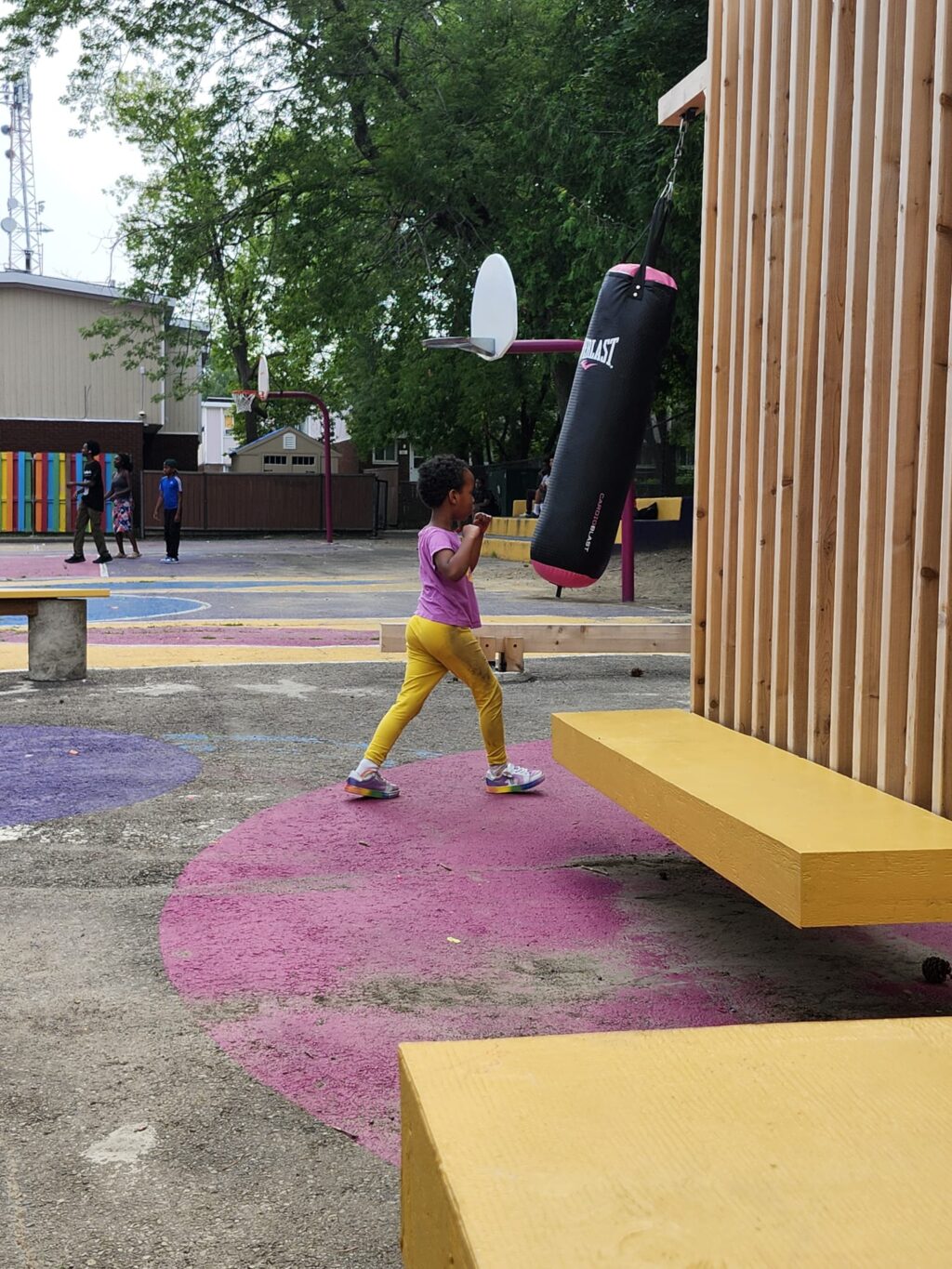
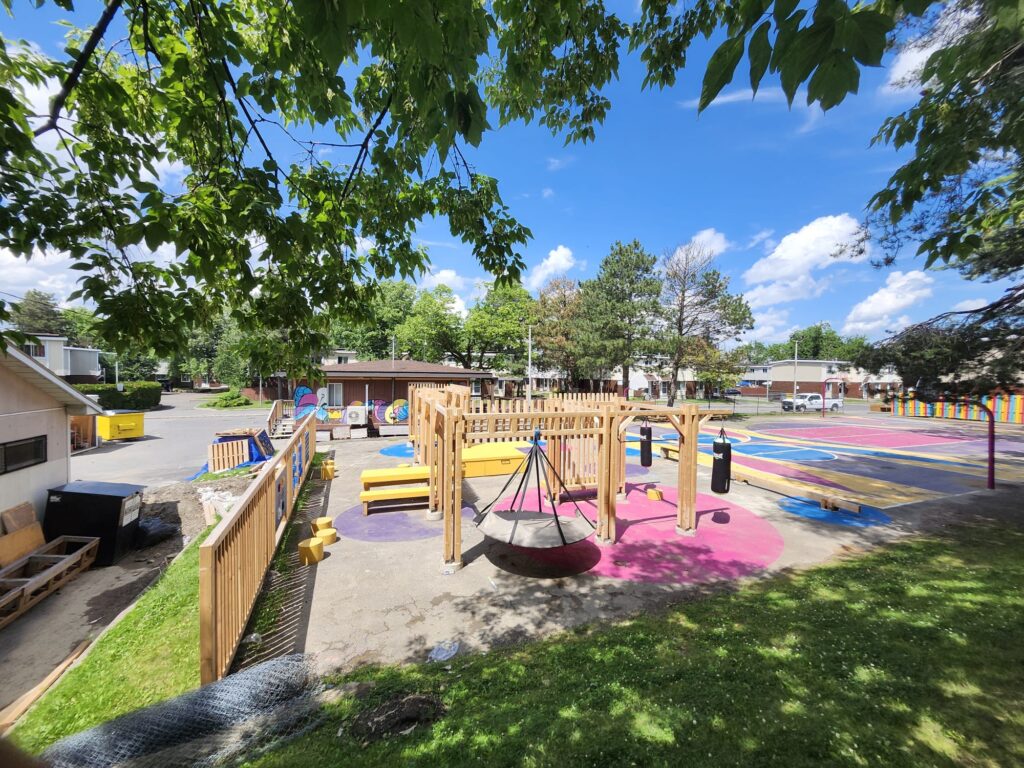

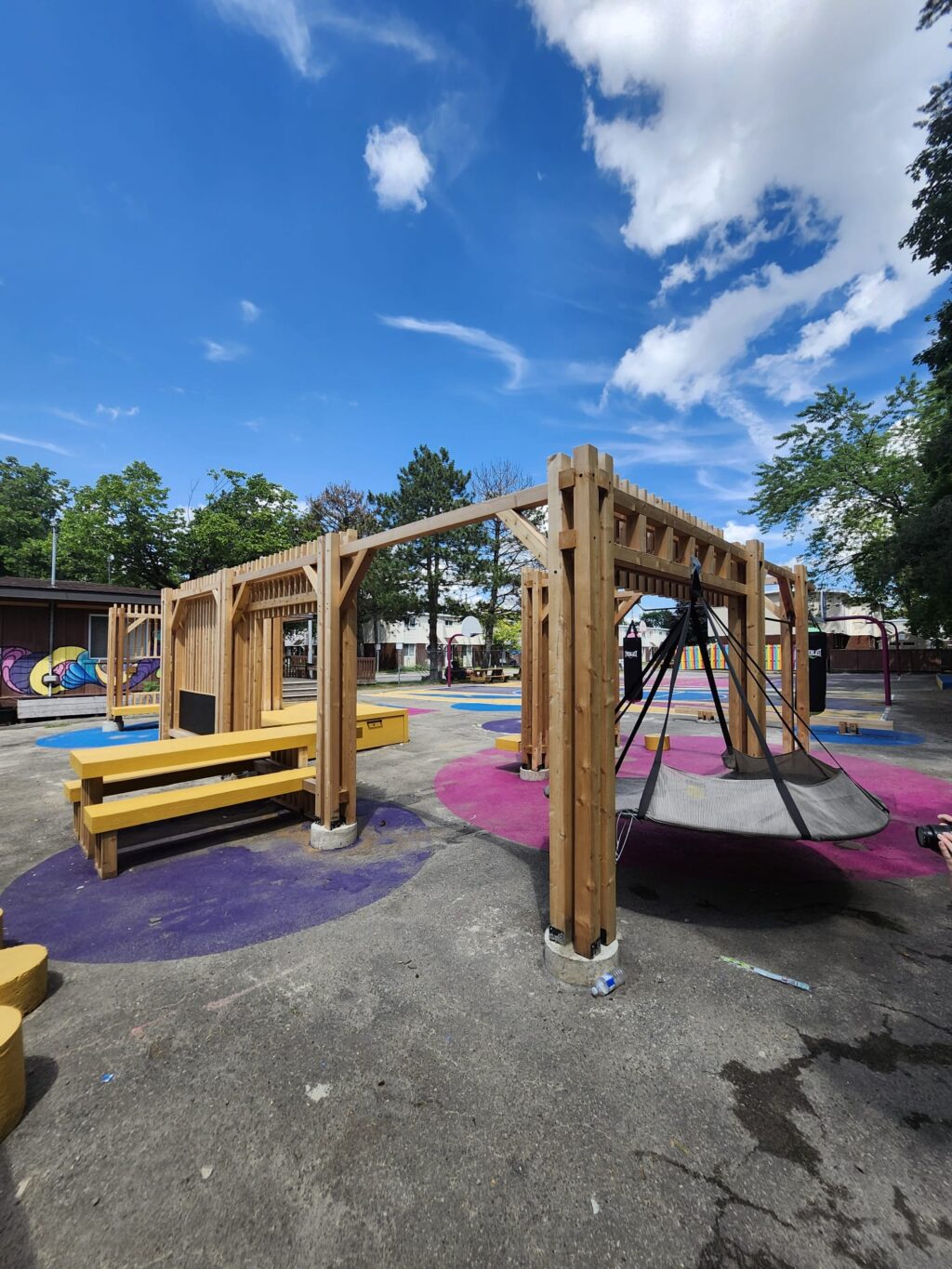
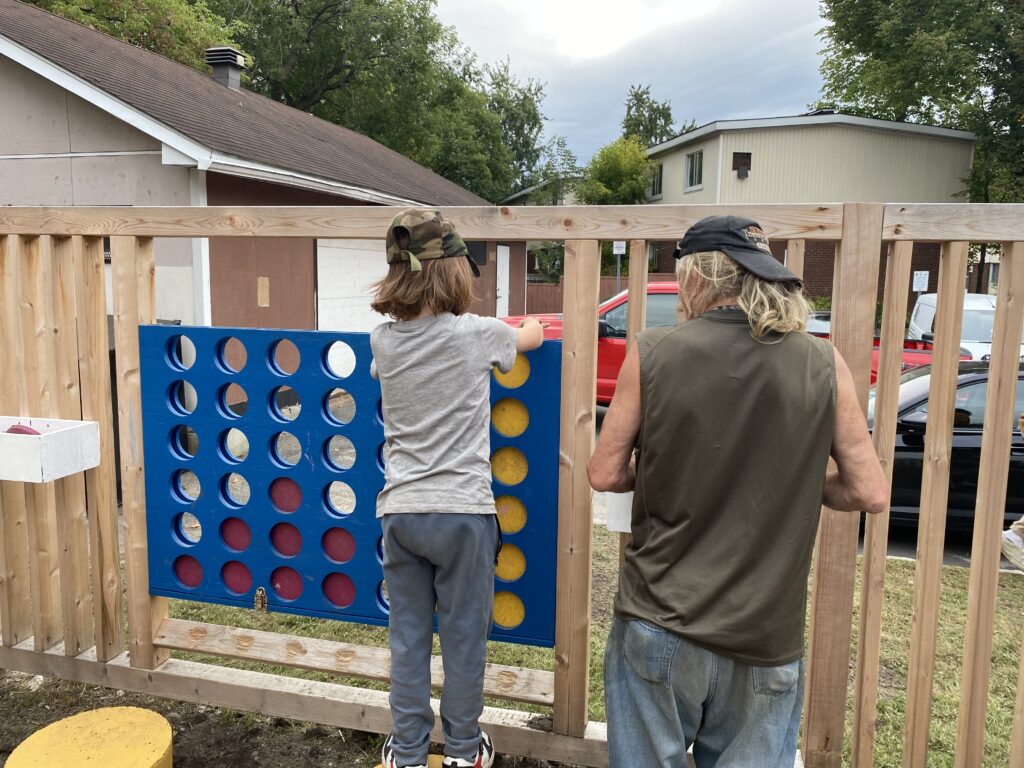

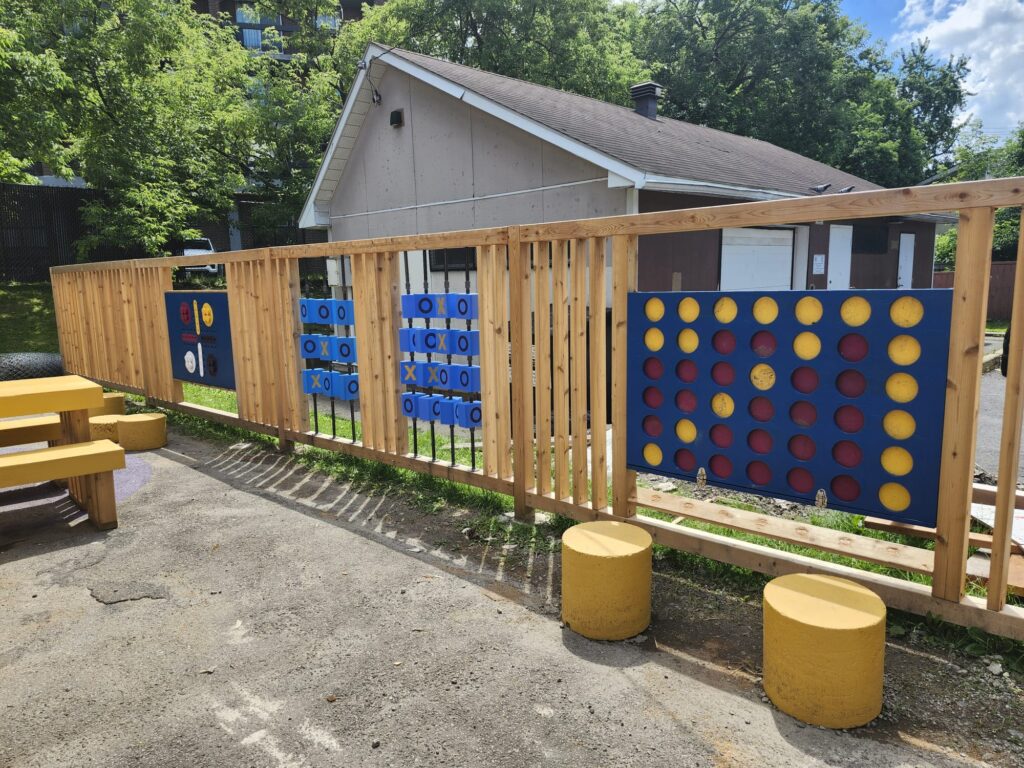
The Russell Heights project started in the fall of 2022 with community workshops to identify the needs of the residents in the social housing development.
Work began in the summer of 2023, when students repaired and refurbished the youth house and community kitchen and built a deck, pergola, and outdoor seating area. They painted a colourful mural on the existing basketball court and, at the request of girls in the community, added a volleyball court.
“Phase one was all about repair and joy,” says Agha. “Phase two was about acting on the imagination of kids.”
Phase two got underway in the fall of 2023 when 20 youth, aged 13 to 19, came to the architecture school for design workshops that produced five alternatives of the project.
About the project
Phase One (2023)
• Improvements to the community kitchen and the youth house • New deck, pergola, planters, and seating • Refreshing existing basketball court • Mural • New basketball and volleyball courts
Phase Two (2024)
• An outdoor gm structure with punching bags, chin-up bar, hammock • A gathering space for community events and social gatherings with seating areas • A stage that also serves as a storage area for equipment • An interactive fence with games such as Connect 4 and Tic-Tac-Toe • Outdoor movies viewing area
About the community
• Home to nearly 200 children aged 5 to 17 • Children in single-parent households: 191 • Average monthly income: $2,068 per month • Culturally diverse, rent-geared-to-income social housing community in Southeast Ottawa with about 630 residents
Students from the Action Lab worked to visualize the results, which were then posted on a fence at the site. Accompanied by pizza and conversation with Carleton students, the children and their mothers were able to place red dots on features they liked. The final developed design was a collective effort incorporating ideas and feedback.
“One of the things they wanted was an outdoor gym, an outdoor gathering space,” recalls Agha. “They wanted a calm seating area. They wanted ownership over the public space.”
To the Action Lab partners, this participation was vital. “What we loved about it is not just the final product, but it’s also the process leading to the final product,” says Mehdi Louzouaz, manager of volunteer engagement at Ottawa Community Housing.
The visit to Carleton University was “a beautiful, unexpected result of this collaboration,” he says. “The youth had the chance to go to a university, see what it looked like and what they could do if they work hard and study. A lot of youth is now motivated to continue their education.”
Sara Dwyer, executive director of the Russell Heights Community House, agrees. “I think the most important aspect of this project is that the team from Carleton came in first to meet with the community.
“The residents understand their day-to-day reality better than anyone that’s going to come in for a visit,” she says. “They can let us know what they will value. The impact wouldn’t be the same if it weren’t so valued by the community.”
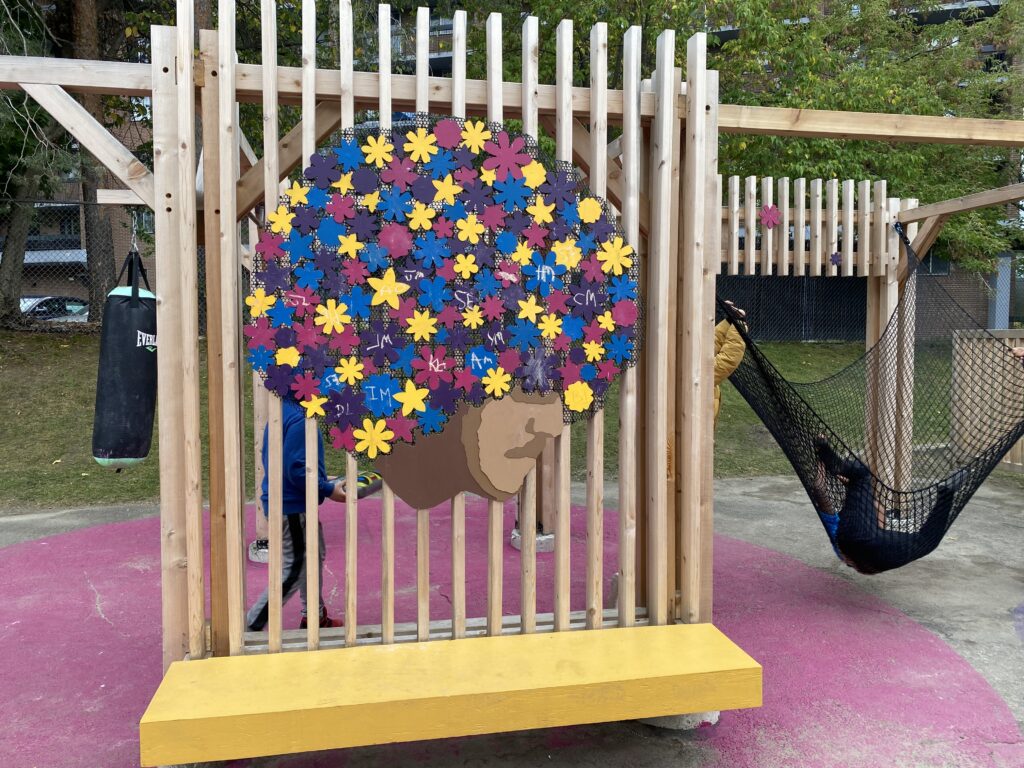
Tragedy struck during phase two construction this past summer when 19-year-old resident Yousef Salaman was killed in a shooting on June 28. The project team created an artwork to commemorate him.
“In acknowledging the disproportionate challenges faced by Black youth, the project emphasizes creating a space that is not only safe but also encourages community agency,” explains Agha.
“The design integrates elements that encourage social interaction, physical activity, and quiet reflection, all of which are essential for holistic mental health,” she says.
Dana Mkarem, a third-year student in the Bachelor of Architectural Studies program, helped construct the gym structure, including the hard work of ground excavation.
“As I was working over the summer, it was really nice to see the kids gather with excitement and hope,” she recalls. “That made me feel ‘this is the reason why I’m here.’ Seeing those kids smile, it genuinely makes you very happy.”
Mkarem learned to accept vandalism or damage as design feedback. When the ornamented roof of the pergola was broken by community members standing on it, they didn’t think it was a community issue. Instead, they revised the design.
“That was a very important perspective that completely changed my views on everything,” she says.
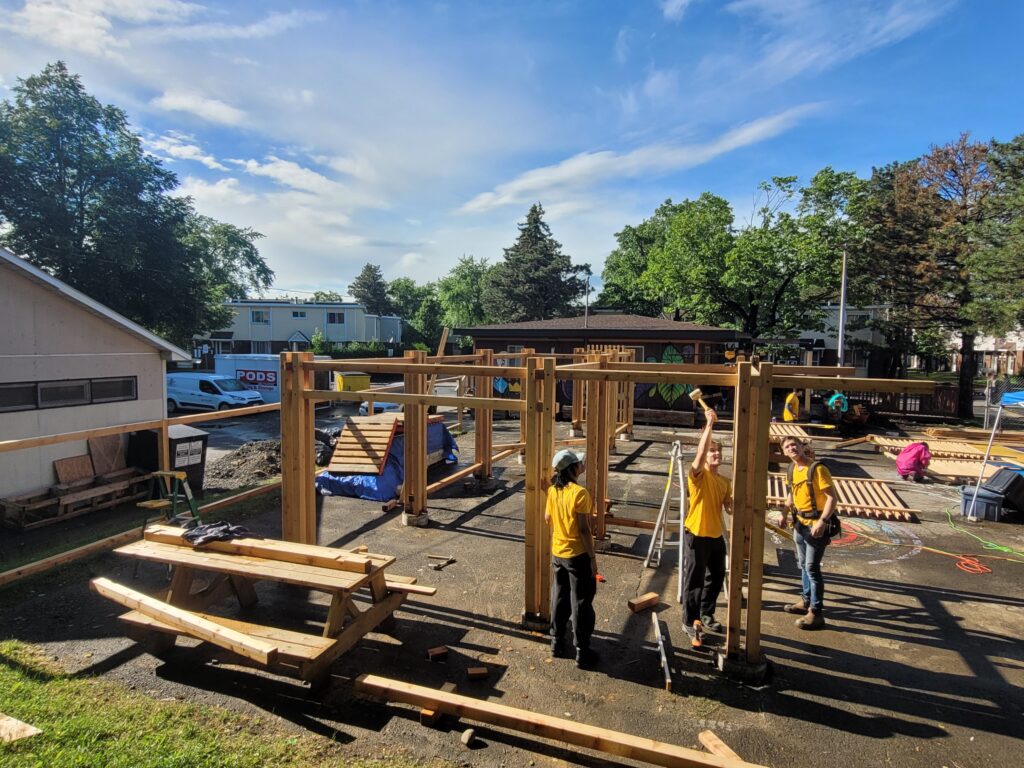

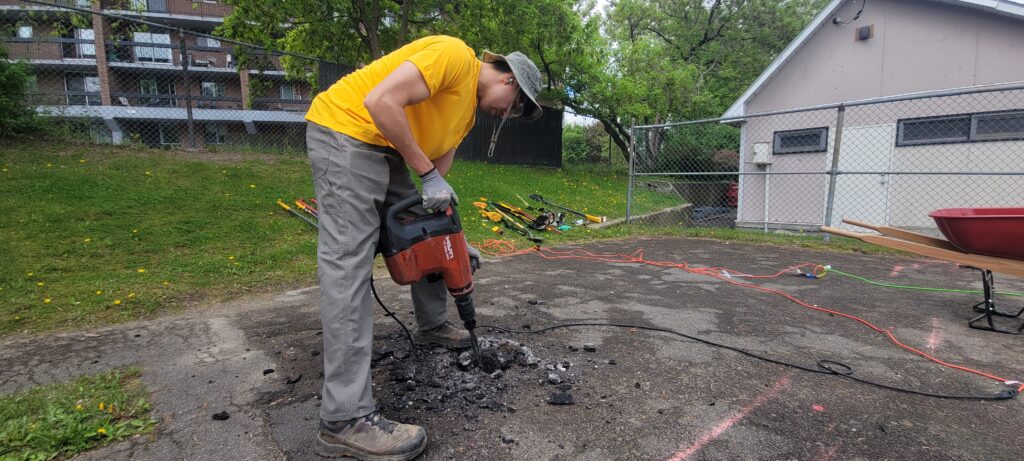
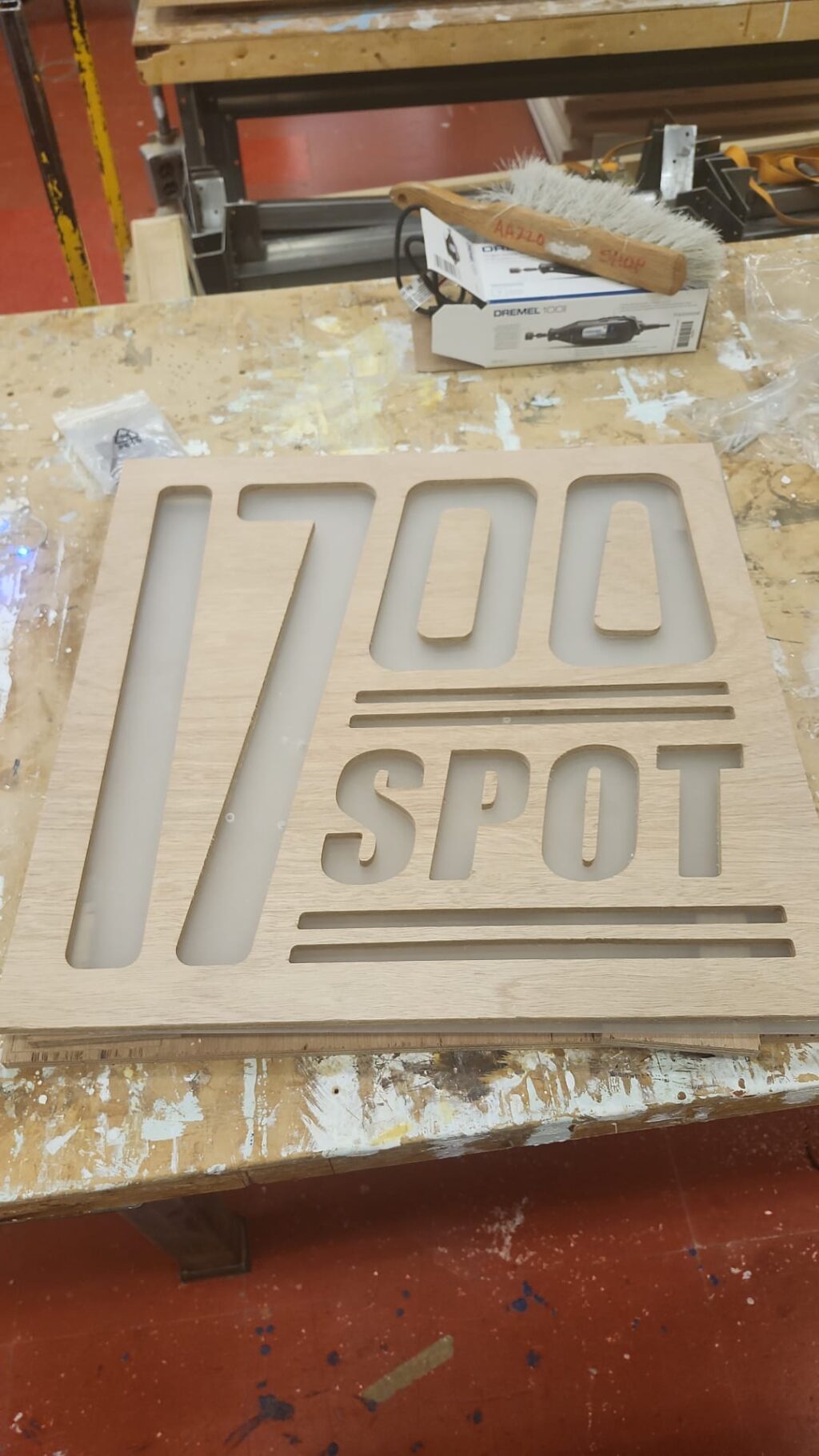



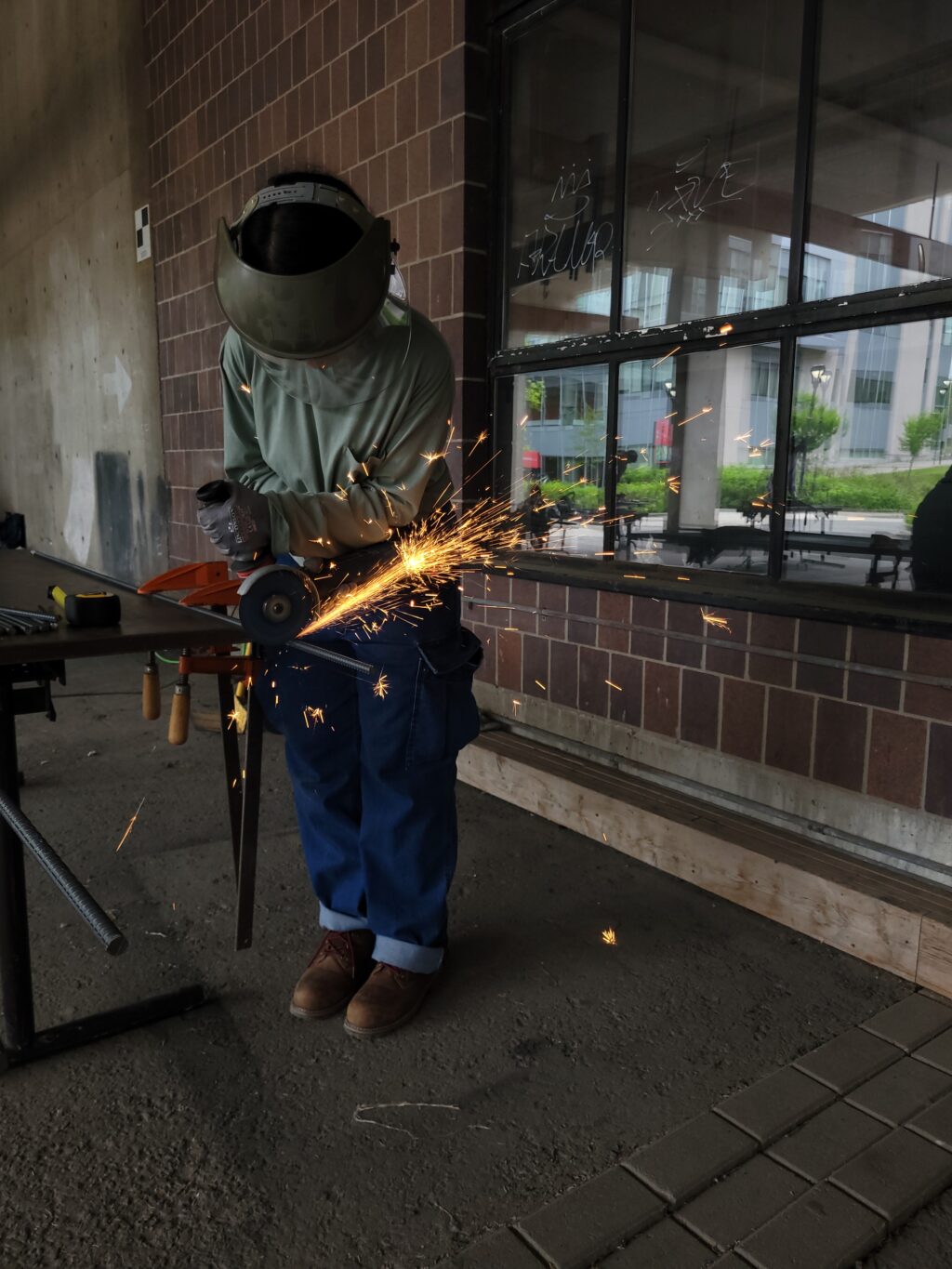
Action Lab researchers, fabricators, and builders helped realize the project. They worked together with students who took the summer design-build studio, Building Morphology, taught by Instructor Joshua Eckert. An alumnus and founding member of Action Lab, Eckert led construction.
“They worked late, they worked tired, they worked with very little sleep,” says Agha. “And they worked with the kids around us.“
Several teens from the community also took part, she notes. “We did not just co-design, we also co-built with them. They learned how to use a drill. As volunteers, they were paid $50 every day they worked.”
Master of Architecture student Juan Ramirez handled a range of responsibilities, from hands-on labour to collaborating with Action Lab colleagues on the project’s design phases.
“This firsthand experience enabled our team to gain a profound insight into the specific challenges and promising opportunities associated with working alongside organizations like Ottawa Community Housing,” says Ramirez.
“We recognized that even small, strategically implemented interventions can serve as catalysts for setting new design standards within communities such as Russell Heights,” he says.
“It has reinforced my passion for community-driven initiatives and highlighted the significance of thoughtful, inclusive design in fostering sustainable and thriving neighbourhoods.”
The following alumni and students were among those who contributed to phase two.
Borna Hosseini Bay, Lia DiGiulio, Joshua Eckert, Sally El Sayed, Manasi Gungabeesoon, Will Harmer, Rebecca Hill-Lamoureux, Lauren Liebe, Dana Mkarem, Conor Nicell, Stephanie Opdebeeck, Marleine Ovemurai, Juan Rodriguez, Josh Smith, Godfrey Tse, Gerry Raphael White, and Tanis Worme.